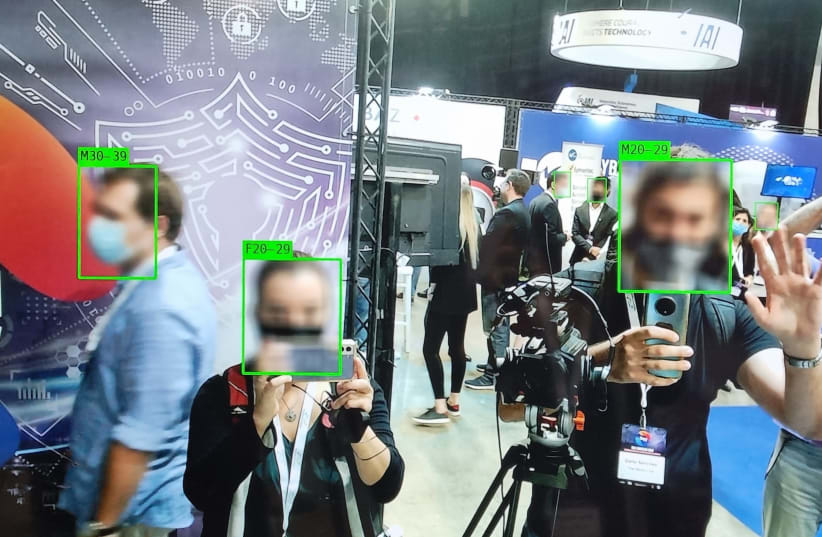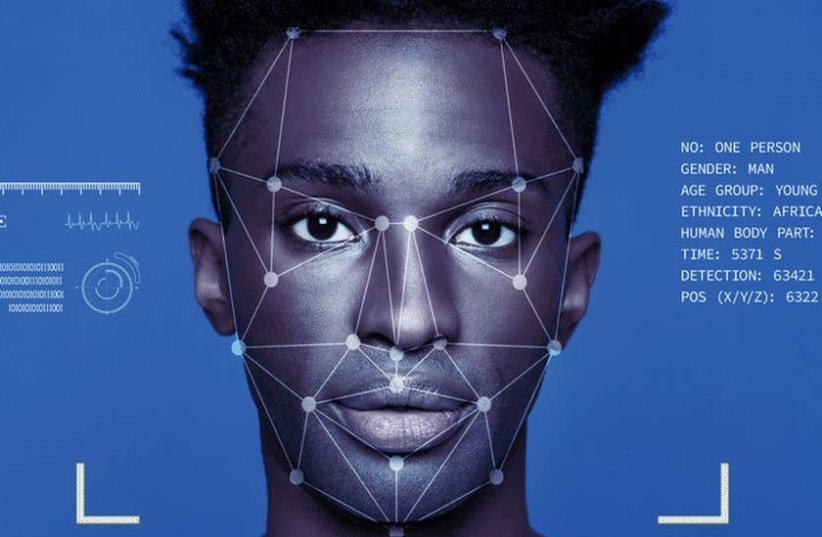In the not-so-distant future, robotic dogs equipped with facial recognition cameras might just scamper about outside and help police officers identify suspicious persons.
Contactless commerce, airport security and law enforcement: The use of facial recognition technology (FRT) is quickly becoming a must-have for the public and private sectors.
In fact, a recent survey from the US Government Accountability Office showed that 19 out of 24 government agencies were using some form of facial recognition, which demonstrates how every day this controversial technology has become.
Israeli and American defense and security companies recently converged at the iHLS Innotech conference in Tel Aviv. Among the dozens of firms that took part in the nearby exhibition, several were involved in one way or another in FRT.
Oosto, formerly Anyvision, is an Israeli firm that uses artificial intelligence in its facial recognition system. They are currently working with law enforcement agencies, retailers and other clients.
“When you need to pick up and find a specific individual in a large crowd in many use cases – it can be security but it can also be a lost child or an elderly person who got lost,” Boris Gokhman, VP sales at Oosto, related to The Media Line. “You have to be able to analyze large amounts of data simultaneously and very quickly get to this person.”
Founded in 2015, Oosto is headquartered in the central Israeli city of Holon. They have developed “Better Tomorrow,” an advanced Tactical Surveillance System (TSS) that can identify a person of interest with 99% accuracy. The system simultaneously analyzes multiple live video streams from closed-circuit TV cameras and mobile cameras.
Meanwhile, California-based firm Silvus Technologies, which specializes in advanced communications technologies, is collaborating with robotics companies that have begun to implement FRT.
“We’re in a lot of robots that are starting to have that kind of technology,” Allen Johnston, senior international sales director at the company, told The Media Line. “The robotic dog there has a number of different sensors on it and that’s some of the technology that robots are now going to start to deploy in order to deploy a robot safely where you’re not putting a human in harm’s way.
“It could be on perimeter patrol around some kind of critical infrastructure facility; it could be at an airport, it could be in a war zone – it’s much more valuable to a team to not lose one of their members than to have a robotic dog maybe need some repairs,” he said.
Others at the show focused on the software that powers video surveillance.
Founded in 2008, BriefCam is focused on video analytics using a patented technology called video synopsis, which transcribes videos into searchable key data. Three years ago they were acquired by Canon.
“In retail, the use case is to see the convergence rate for how many people who are entering the store are actually buying [something],” Igal Dvir, VP of technology and products at BriefCam, explained to The Media Line.
“So you have a facial recognition camera at the entrance and at the point-of-sale and then we can actually compare and measure how many people in the store actually bought something,” he added.
Despite such seemingly banal applications, privacy experts are concerned that this powerful new technology blow up in our face. While facial recognition can undoubtedly be viewed as an invaluable tool in any law enforcement agency’s arsenal, authoritarian governments or people with malicious intent could use it and other remote biometric systems to abuse human rights.
China’s facial recognition system, for instance, keeps a record of nearly every citizen in the country. A database leak from 2019 showed that 6.8 million system logs were recorded in a single day based on cameras positioned around the country, according to tech website CNET. The Chinese government has further been accused of using FRT to target its Uyghur Muslim minority.
In the US, the cities of San Francisco, Oakland, and Boston have already decided to ban the use of facial recognition by public agencies, while certain states (like Washington) have begun introducing legislation to regulate its use.
“Regulators should help this industry to create the specific guidelines not of ‘don’t use it,’ but how you can use it, where you can use it and where you cannot use it, which is also important,” Boris Gokhman of Oosto asserted.
Others in the tech arena argued that, privacy concerns aside, facial recognition is here to stay.
“You cannot stop the technology,” Innotech conference chair Avi Yariv told The Media Line. “We have to make sure how we supervise it and how we fight it.”

